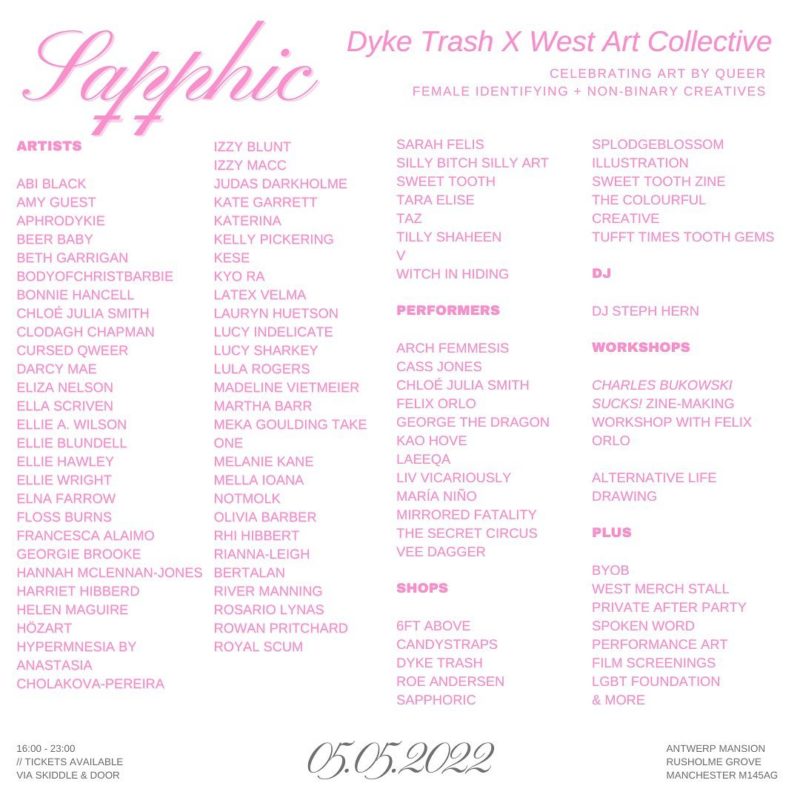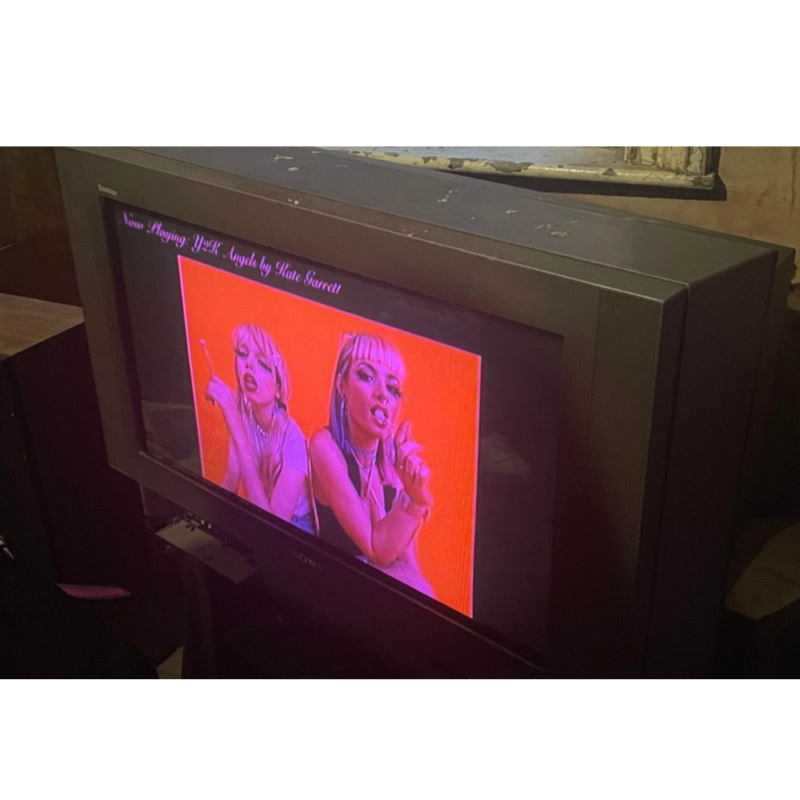About
On the 5th June, Dyke Trash and West Art collective put on their first exhibition, presenting all forms of art from Queer female identifying creatives. We caught up with two featured artists: Kate Garrett (she/her) and Izzy MCcallum (they/them) to ask them about sapphic identity and what that means for creative spaces.
Q: How did you find being in a sapphic space?
Kate: I loved it. As a femme-presenting woman I am often assumed to be straight. It felt nice being in a space where it was the opposite for once, and I didn’t have to ‘come out’! Also I have to say as a bonus: everyone’s fashion sense was absolutely amazing.
Izzy: Sapphic spaces are so special, It’s such an enjoyable experience. I get an immediate feeling of being connected and theres a unique shared experience of being in a room with people who really are like you. Art spaces can be hard to get into in the first place, and then once you’re in they’re often full of unspoken expectations – this is removed when that art space is sapphic. We can just connect with the art and each other.
“Sapphic spaces are so special. I get an immediate feeling of being connected and theres a unique shared experience of being in a room with people who really are like you.”

Q: Would you like to see more sapphic spaces, do you think female queerness is represented in creative spaces?
Kate: I definitely would. I do think we are starting to gain a lot more representation, and I would love for that to continue. The majority of art pieces about women I saw growing up were from the male point of view, I think the reason films such as ‘Portrait of a Lady on Fire’ have done so well is because we are finally being exposed to the female gaze. There were quite a few pieces at the exhibition featuring nudity, but it didn’t feel voyeuristic at all, and instead more of a celebration about femininity and the body.
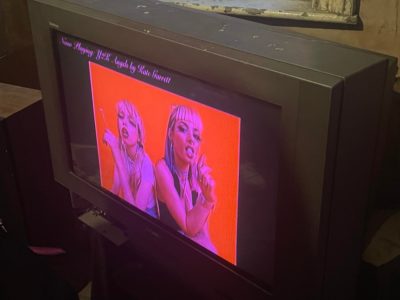
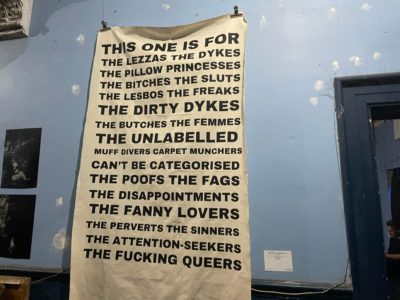
Q: What was your favourite piece of work you saw?
Kate: It’s hard to choose just one! I really enjoyed watching the performances, before one of the pieces took place an alter was put on the stage and audience members were encouraged to come up and light incense as offerings. I thought that was really fun and embraced the stereotype of queer women being into witchcraft.
I would probably say my overall favourite piece though was a poem by Georgie Brooke called ‘A Poem That I Keep Folded In My Purse In Case I Ever See You Again’. It captures the intimacy between romantic partners in a really beautiful way, and emphasises the playfulness of relationships.
“Celebrating and exploring my queerness and neurodiversity is fundamental to my practice”
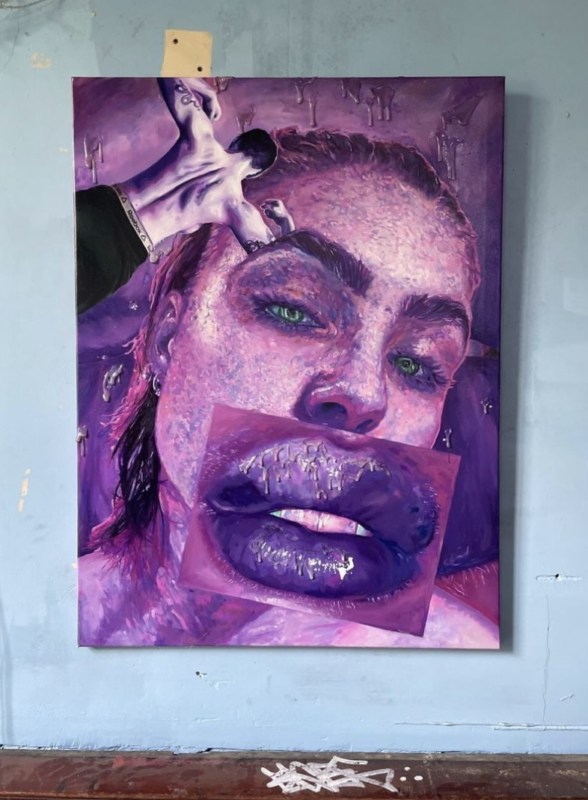
Q: Do you find your neurodiversity and your queerness play a big part in your artwork?
Izzy: Celebrating and exploring my queerness and neurodiversity is fundamental to my practice as a queer creative and multimedia artist. My work explores alternative queer spaces between lived realities and distant fantasy, presenting both artist and viewer with embodiments of fantasy non-linear narratives and performative self-portraits. Working upon the notion of disrupting the ugly colonial and patriarchal obsession with logic and knowledge as a means of control, the work’s absurdist, low fi, ADHD, parodic prosumer extravaganza and its non-linear potentialities underpin its mutating aesthetics, ideology, and camp sentimentality.
My practice is very instinctive, I work with how my brain wants to create the work. My process is catered to how I think, it’s collaged to lots of different moments and cyclical referencing. With ADHD and dyslexia, I don’t think in a linear manner, which comes across in the work. To me, my work looks like the inside of my brain. In the other parts of my life, I have to fit my thinking into a preexisting mode of being whereas in my work, I make the rules. My mental process is an asset and I can let neurodiversity guide me rather than repressing it.
Follow @dyke_trash for more news and upcoming exhibitions…
